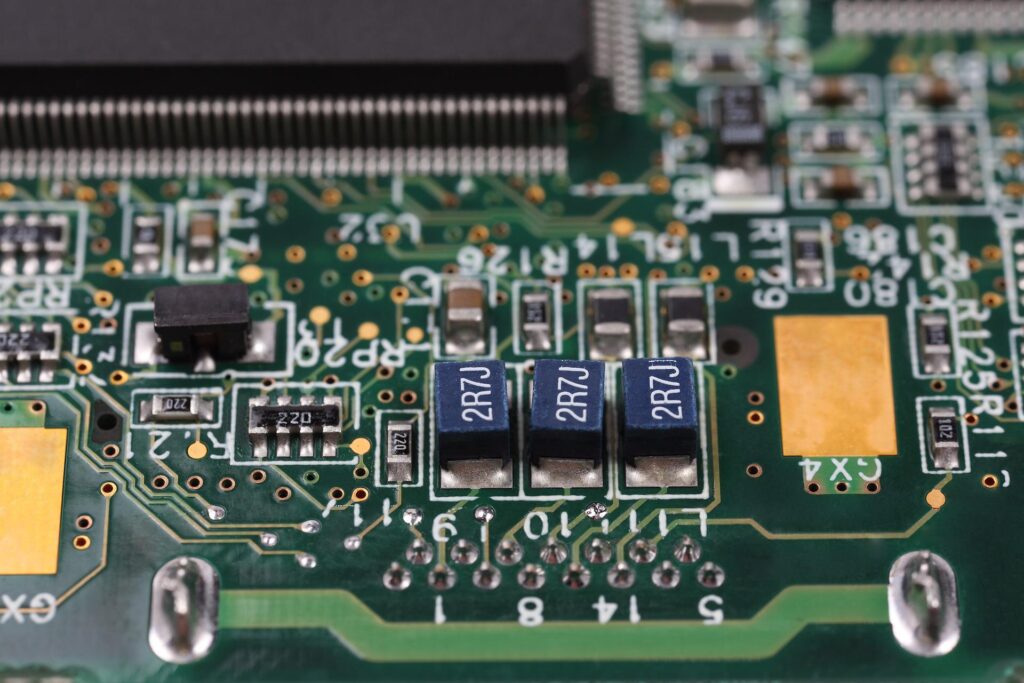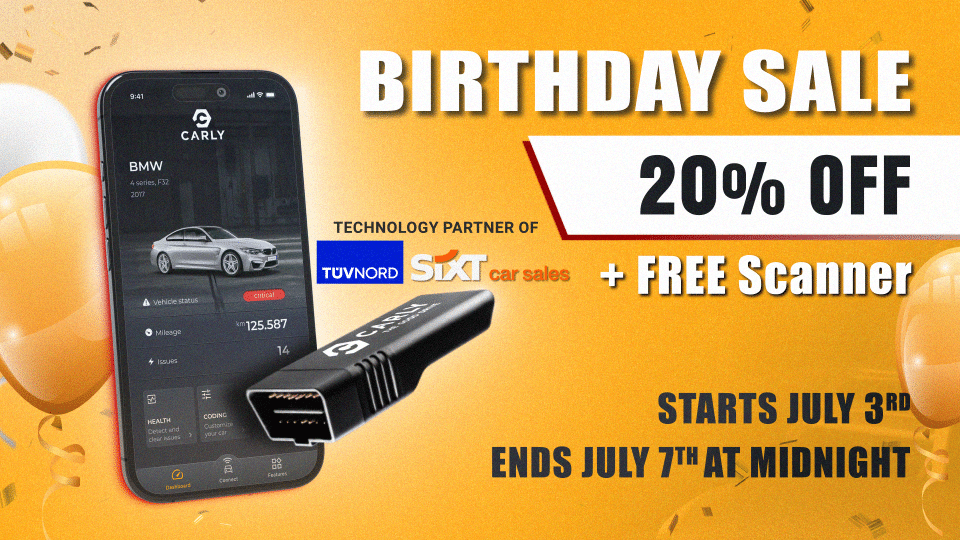Is it worth investing in a Volkswagen OBD scanner and what information and benefits does it offer? Can a Volkswagen OBD scanner be used by people who do not have much technical knowledge? If you are also faced with the decision of whether to buy an Volkswagen OBD Scanner and which device it should be, we would like to give you all the necessary information in this article. These informative tips should help you make a good decision.
What is the Volkswagen OBD?
Volkswagen began integrating a diagnostic connector into its vehicles as early as the 1960s. However, this should first and foremost enable technicians at authorized workshops to diagnose defective vehicles quickly and efficiently. However, this diagnostic option was not very successful, ultimately also because diagnostic devices were used that still worked with punched tape.
Modern ON-board diagnostics emerged in the 1980s in the USA. At the time, major California cities were struggling with immense air pollution problems, forcing the Air Resources Board to develop new emissions standards. One problem the authority had, however, was to be able to guarantee and verify the guidelines over the entire service life of the vehicles. The first on-board diagnostics (OBD) was developed, which allowed the components of the exhaust gas cleaning system in vehicles to be constantly checked by the vehicle itself. In order to also enable interrogation from the outside, a diagnostic connector was developed with which the status of the exhaust system could also be interrogated with an external readout device. The OBD1 standard was introduced by the California EPA in 1987 and was required to be met by all new vehicles as of that year.
So if international vehicle manufacturers wanted to sell their products in California, they had to integrate on-board diagnostics into the vehicle starting with the 1987 model year. For most international vehicle manufacturers, it did not make sense to produce extra vehicles for the California market. They used the OBD1 standard starting this year in all new vehicles designed for the U.S. and European markets.
The Volkswagen OBD standard and the engine malfunction light
Another important component of the OBD is the engine malfunction light. It was already prescribed with the first version of the standard to inform the driver about error messages. It is displayed in the cockpit of the vehicle in yellow or orange color in the form of an engine block. Depending on which error messages are present, the following light sequences of the motor fault light can be displayed:
Permanently lit, this indicates a fault in the exhaust system, which has been detected and also confirmed. The vehicle can still be used.
Flashing warning light, indicating an error that can cause serious consequential damage. Most automakers will then initiate an emergency running program where the speed and performance of the vehicle can be restricted. A vehicle with a flashing warning light should be turned off as soon as possible. In this case, it is necessary to fix the corresponding error as soon as possible. Otherwise, serious consequential damage could occur.
Warning light flashes once, but then goes out again.
The OBD detected an error, but it could not be detected in the next measurement cycle. The vehicle can still be used , but attention should be paid to further illumination of the warning light.
We would like to point out that error messages may also be present if the warning light is not switched on. These faults are primarily not relevant to exhaust gas purification and usually have only a minor impact on the operation of the vehicle in question.

Volkswagen OBD2
In 1996, the OBD1 standard was replaced by the OBD2 standard in the USA. The reason for this was the technical innovations of recent years, which have led to more and more electronics being used in automotive technology as well. While in the early years only electronic control units were used for engine control, in the 1990s many new safety functions were made possible with the electronic control units.
Control units offer the advantage of being able to accurately read data with sensors, evaluate it with algorithms, and then trigger actions. This allows the engine temperature, oil pressure, outside temperature, speed and many other data to be evaluated and used for safety functions such as the anti-lock braking system and anti-slip system. However, electronic control units can also be applied for comfort. Automatic climate control is one of the best examples of this. Up to a hundred control units are used in modern vehicles today.
The electronic control units were one of the reasons that OBD1 was replaced by OBD2. The modern control units offer two basic advantages. On the one hand, they can exchange data with each other through a communication network, and on the other, they have the ability to generate error messages that can also be used in on-board diagnostics.
Already in the first version of the OBD error messages were used. They were defined in the DTC (Data Trouble Code). This is a five-digit code, which we will discuss in more detail later. The fault codes can be used in the OBD2 standard to give an in-depth overview of a vehicle’s condition. With the ECUs, almost all functions in a vehicle can be constantly checked with the on-board diagnostics and an error message is issued if problems occur.
The OBD standard was introduced in the USA in 1996 and has also been mandatory for vehicle manufacturers in Europe since 2001 as EOBD. In addition to harmonizing vehicle diagnostics, the standard is also intended to ensure the monitoring of emission impact.
The operation of the Volkswagen OBD
On-board diagnostics was developed primarily to check the exhaust system. In modern vehicles, however, it can be used to query all current data and control units. Since the first OBD version was developed, a 16-pin Volkswagen OBD connector was specified. It allows to interrogate the electronic system through a suitable Volkswagen OBD readout device. Since the modern ECUs in vehicles are all connected by a communication bus, a lot of information and data can be read out with a Volkswagen OBD scanner.
However, the most important information of the on-board diagnostics is still the function of the Lambada probe and the efficiency of the catalytic converter. In addition, the engine is constantly checked for combustion misfires. If the vehicle has an exhaust gas recirculation and secondary air system, these are also constantly checked for fault-free operation.
If an error occurs or incorrect data are detected in one of the control units, they are stored in the debouncing counter at the first occurrence. An entry is only made in the error memory if the error occurs again in the next test cycles. If the corresponding error does not occur again within a specified period of time, the entry in the debouncing counter is deleted. Depending on which error has occurred, the warning light in the dashboard is also activated.
In addition to the mandatory inspection of the exhaust system, the Volkswagen OBD scanner can also be used to diagnose other vehicle components. Since there is a connection between all ECUs, all information from these ECUs can also be tapped for the diagnosis of a vehicle. Among other things, the values of all sensors can be read out, individual diagnostics of the components can be used and a complete system diagnosis can be performed.
The Volkswagen OBD error codes
Since the first OBD standard came into effect, the fault codes have been defined in the DTC (Data Trouble Code). Each error code consists of five digits and should describe the error that has occurred, as well as the exact component responsible for the error. Ever since the DTC was created, car manufacturers have been given the option of using their own fault codes. The error codes can be broken down as follows:
The first letter of the Data Trouble Code stands for:
- P – Powertrain – Drive train
- C – Chassis – Chassis
- B – Body – Body
- U – User Network – Communication Networks
This is followed by a code that states whether the error is a general error (0) or a manufacturer-specific error (1).
The third digit is used in the DTC to specify subfamilies for the first digit in the code. For this purpose, letters or numbers can be applied. Here are some examples:
- 0, 1, 2 – air or fuel metering control
- 3 – Ignition system
- 4 – additional emission control
- 5 – Motor run control
- 6 – Onboard computer
- 7, 8, 9, – Gearbox control
- A, B, C – Hybrid drive
In the meantime, more than 11,000 error codes have already been defined in the DTC. In Europe, the SAE, J2012 and ISO 15031-6 standards are used for this purpose. The definition of the individual error codes is very important, as this can guarantee a readout of the error messages with a Volkswagen OBD scanner.
The Volkswagen OBD and the different readout modes
Since the first OBD was developed, different modes could be used to read and manipulate the data with a Volkswagen OBD scanner. Depending on the year of manufacture of the vehicle, individual options may not be used. However, younger vehicles are more likely to support all modes.
Mode 1
The first mode of the Volkswagen OBD offers the possibility to read the values of some sensors. These include, but are not limited to:
In each vehicle, the data from the sensors are identified with a PID (Parameter Identifier). When reading out with a Volkswagen OBD scanner, the data can therefore always be assigned to the correct sensors. The PID are standardized and offer the possibility to read out the vehicle values with a Volkswagen OBD scanner and use them for diagnosis.
Mode 2
When an error message is registered in a vehicle, all other control unit data is also saved. This frozen data can be used in the
error diagnosis can be very helpful. An accurate snapshot of the sensor data is created at the time the error or problem was first recorded. This provides a way to more closely isolate the source of the error.
Mode 3
This mode was developed to be able to read out the actual error codes. Since they are mostly standardized, they can be interpreted with any Volkswagen OBD scanner . However, since there are also some error codes defined by the vehicle manufacturers, you should pay attention to the exact vehicle type when choosing the Volkswagen OBD scanner. The error codes can basically be divided into four different groups:
– P0xxx: Error message for drive system
– C0xxx: Error message for chassis components
– B0xxx: Error message for body area
– U0xxx: Error message in the communication networks
Mode 4
This mode can be used to clear the errors of the various control units. Once the relevant fault codes have been cleared, the engine control lamp should also be deactivated. However, you should know that if
error codes of problems are deleted, but which have not yet been eliminated, the OBD immediately generates again a new error code, which may also be responsible for the activation of the engine malfunction light.
Mode 5
This mode is designed to read all the information from the on-board diagnostics. This mode is only available in vehicles without CAN bus and offers the possibility to download all stored data of the vehicle electronics.
Mode 6
This mode played the same functions as mode 5, but is designed for vehicles with CAN bus.
Mode 7
This mode was developed to be able to read out the data of the debounce memory. The appropriate Volkswagen OBD scanner can be used to read out the faults that appear only once and could not be detected during the following test cycles. This mode can be used when a vehicle is to be checked after repair.
Mode 8
This mode is used to output results of OBD made on other system. This mode is rarely used in vehicles of European manufacture.
Mode 9
This mode was developed to be able to retrieve the vehicle-specific data with a Volkswagen OBD scanner. Here, for example, the
Vehicle identification number and manufacturer-dependent calibration values stored.
Mode 10
This mode was developed to read permanent error messages with a Volkswagen OBD scanner. Permanent error codes cannot be cleared to the other mode if the source of the error has not been eliminated. The OBD allows clearing these faults only if the fault could not be detected in a specified number of test cycles.

Where is the OBD diagnostic connector located?
The OBD standard specifies that the OBD diagnostic connector must be located in the passenger compartment and no more than 1 m from the driver’s seat. Volkswagen always uses the color pink for the OBD diagnostic connector. It is usually located between the steering wheel and the driver’s door, in the lower half of the dashboard. This ensures that the Volkswagen OBD scanner can be connected quickly to ensure efficient and fast diagnosis.


